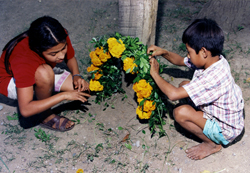By Yolanda Reynolds
Photos by Mary J. Andrade

Entering the town of Tlaxcala, capitol of the State of Tlaxcala, is a visual delight. The City lies in a high valley surrounded by even higher mountains, some of which are volcanoes, one of which, La Malintzin soars to over 15,000ft. above sea level. The sky is a clear translucent blue that is made even more dramatic by constant puffy white clouds floating about in the sky.
In the City, the official buildings have a distinctive architecture, grand but not ostentatious, and almost all graced with cool patios and lovingly cared for plants.
In Tlaxcala, the unabashed use of color on structures, residential or public, is distinctive. There are colors such as deep blue, rusty orange, brownish red or yellow, that are often further enhanced by the use of a sparkling white trim around entry ways and windows. The inspiring white trim seems to capture the clouds that float overhead and bring them closer to earth, inspiring a sense of deep spiritually and awareness of place.
Tlaxcala, whose Nahuatl name means the tortilla of corn, “tortilla de maíz” is located almost 75 miles east of Mexico City, approximately 19 miles north of Puebla and slightly over 190 miles west of the port city of Veracruz.
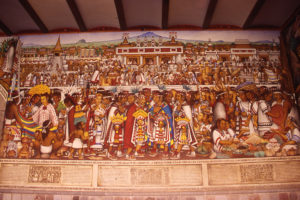
The Tlaxcala area has been populated since 300 years B.C. A group of those early residents, the Olmeca-Xicalanca, a Maya speaking, trading and seafaring people were comprised of three distinct ethnic groups, Nahua, Mixtecos and Chocho-Popolocas. They left to posterity a site known as Cacaxtla, a place that is generally described as a “fortified ceremonial and palace complex” that is decorated with some of Mexico’s most beautiful and well preserved examples of pre-Columbian murals. Cacaxtla enjoyed the height of its influence and prosperity around 600 A.D, and slowly declined until it was totally abandoned by 1,000 AD. It was about 1,000 A.D. that Teotihuacan also disintegrated and it too was abandoned. According to archaeologists that period was a time of great social change throughout what is now described as Mesoamerica.
The City of Tlaxcala was established in the early 1500’s in a cooperative arrangement with the Spanish conquistadores. This was under the local leadership of Cortez, and the four Señoríos of the pre-Columbian República de Tlaxcala.
It is to the history of the Tlaxcalans and the often-forgotten role of the Tlaxcalan peoples in the history of not only ancient Mesoamerica but of modern Mexico, that Don Desiderio Hernández Xochitiotzin has dedicated his artistic talents.
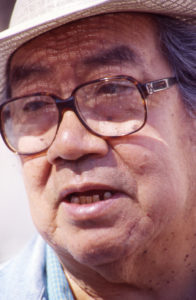
His vast knowledge of history, archaeology and his native culture was combined with a profound determination to paint murals that would tell of the fascinating and glorious legacy of the Tlaxcalan peoples. These murals were painted on the interior walls of the Palacio de Gobierno, the most important State government building in the town square. Don Desiderio has been working on these murals for almost 40 years. He has yet to complete the history from La Reforma to the present. He hopes to begin soon the last of the panels that will complete the mural.
These murals by Maestro Desiderio can be enjoyed at many levels: for their artistic value; for the hundreds of details in the murals that illustrate what life was like in ancient Mexico and the numerous achievements that brought great power, prosperity and influence to Mesoamerica; or simply to provide to others with direction for further research as depicted in the recorded comments relating these early days which accompany each panel of the mural.
Don Desiderio, whose ancestry derives from the early settlers of the area now known simply as Tlaxcala, wanted his murals to present the proud and courageous struggle of the Tlaxcalans to maintain their independence even before the Spaniards arrived.
Prior to the arrival of the Spaniards the Mexicas, more commonly referred to as the Aztecas, formed a military and political alliance in three powerful
districts, of Mexico-Tenochtitlan, Texcoco and Tacubaya. Their Triple alliance enjoyed a hundred-year plus hegemony over many neighboring tribes in what was then Mesoamerica.

According to Jesús Monrajas-Ruiz, the Ethno history Director of the National Museum of Anthropology, this Alliance basically controlled over
400pueblos, districts (señoríos) or city States throughout Mesoamerica. For the Triple Alliance, this control enabled them to collect onerous quotas of tribute from their subjects that made them very wealthy but also planted the seeds for their eventual defeat at the hands of the Spaniards in 1522.
This Aztec system of control held over a major part of what is now known as central Mexico. This area included territories that extended from slightly
North of today’s Mexico City, to most of what today is known as Oaxaca and most of the area between the western and eastern coasts. A few places maintained their independence from these Aztecan expansionists. Among them were the brave and well organized señoríos that resided in the area now known as Tlaxcala, another area then known as Yopetzinco (an area, that today, is known as Michoacan) and another pocket of independence in the coastal area of Oaxaca, then known as Tototepec. To the north were areas such as, Cuitlateca, Tarascos, Chichimeca, Huaxteca and Rio Panuco over which the Aztecs seemed to have less interest in controlling and did not control. The Yucatan peninsula remained out of their direct control as well.
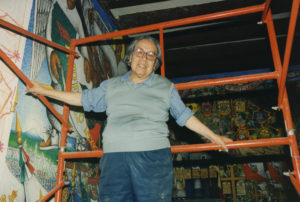
The various leaders of the powerful Triple Alliance began this expansionist movement in 1428 and it ended in 1520. Its center was Tenochtitlan, todays Mexico City.
The Spaniards at first fought the Tlaxcalans, but soon became aware that the Tlaxcalans were engaged in a bitter struggle with the Aztecs and the
Tlaxcalans quickly understood the superior weaponry of the Spaniards. This mutual awareness led them to form an alliance to prepare for the expected battle with the hated and dreaded Aztecs.
As loyal and able warriors, the Tlaxcalans were rewarded by the Spanish Crown. The four señoríos, the Ocotelulc, Tizatlán, Quiahuiztlan and Tepeticpa left their individual government centers in the mountains and relocated in the valley floor.
The Señoríos, the Spanish Crown and the Catholic church leaders also
came to a mutually agreeable governmental structure. The Tlaxcalans were assured the continuation of their familiar republican form of government, the retention of their ancestral lands, the ability to bear arms and own riding horses, and an exemption from tribute payments.
In addition, the Tlaxcalan nobility were recognized and awarded their own official government seal. The Tlaxcalans were excluded by the Crown from the usual encomienda system, whereby a specified number of indigenous people would be assigned to “deserving” Spanish settlers. This policy, more often then, made slaves of the people.
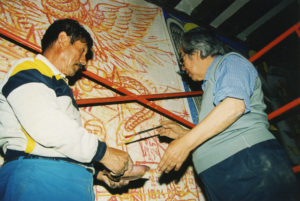
Embarrassed by serious abuses, the Church made a formal request that this encomienda system be discarded. The Crown finally ordered in 1542 that no new encomiendas be awarded, (taxes) and were also bestowed the honor of housing, in the new Republic of Tlaxcala, the bishopric in Nueva España. Today Local government leaderships still dominated by people whose heritage is both Tlaxcalan and Spanish. But the Spanish immigrants to Nueva España reacted angrily and the new enlightened policy was overturned three years later. The encomienda system was not finally abolished until the late 1700’s.
According to historians, by the time the encomienda system ended the best lands of Nueva España were in the hands of Spanish plantation owners or the Church and the majority of the indigenous population has become “peons with scant rights as free men.”
Maestro Desiderio contends that it is wrong to condemn the Tlaxcalans as traitors. The foresigh to fthe Señoríos not only saved their people from the murderous control of the Aztecs but they also saved their people from another disaster that of the ill-conceived policies of the Spanish Crown and the attendant greed that accompanied the conquest of a very rich and prosperous land. Unfortunately, they were unable to save their people from the diseases carried by the Spaniards and eventually many Tlaxcalans did die.

The murals painted by Don Desiderio Hernández Xochitiotzin depict this epic account of Tlaxcalan history and of a people who accompanied the Spanish in establishing many of the colonial towns of Nueva España that still exist today. They include San Luis Potosí, Puebla, Querétaro, Jalisco and Santa Fe, New Mexico, among other cities encompassed in the area then known as Nueva España.
Maestro Xochitiotzin, in another panel of the mural depicts what he feels is the correct portrayal of La Malinche. Malinche’s name has been used, by many, to describe the ultimate traitor. The Maestro says that he sees Doña Marina, or Malintzin, her proper name and not Malinche, not as a traitor but as a very bright woman who had been sold into slavery to the Mayas by the Aztecs. It is understandable that she would attempt to help those who had stood up so valiantly to the dreaded Aztecs who had betrayed her. In Mayan captivity, she learned a second language, Mayan. Her first language was Nahua.
Malintzin knew the beliefs and understood the politics of Central Mexico, and along, with another former captive, a shipwrecked Spaniard named Aguilar who had learned to speak Maya, provided Cortez within valuable knowledge of what the Spaniards were facing in their journey to the interior of Mesoamerica and the Aztec territory.
She not only managed to save her own life, but that of her new found allies, from certain slaughter at the hands of the Aztecs.
The Aztecs had been eager to conquer such valiant warriors as the Tlaxcalans in order to better honor their own voracious gods, who demanded even more hearts in sacrifice.

Attired in a noble dress of red, trimmed in white, Doña Marina, in this mural, is depicted as the mother of modern Mexico. She bore a child, Don Martin y Martin, fathered by Hernán Cortez, who was her companion. Her child, a mestizo, is believed to be the first such recorded birth in Mexico.
Mexico has the largest mestizo population in the Americas and has always expressed pride in this fact.
The panel of murals are executed in the style of the classic muralists. The Maestro explains that he used colors appropriate for each period of history. For example, the rich and regal colors appreciated by the Tlaxcalans adorn the murals of the pre-Columbian days. Grays, blacks and subdued colors reflect the period of the 19th and 20th centuries.

Maestro Xochitiotzin is saddened by the concentration, by many, on the negative aspects of the conquest. He explains that there are positive results to this enormously significant encounter. He explains that we should recognize our heritage without shame or denial. His primary objective is to portray history as it occurred and not to distort history to serve political interests.
Maestro Xochitiotzin has not worked steadily at painting the murals. Because of unfavorable national political trends, there were years when the Maestro turned his attention to investigating the history of the Tlaxcalans rather than painting.He and many of his fellow Tlaxcalans knew of their history from family accounts of those early days, but Don Desiderio wanted objective proof of that history. He read the pre-Columbian codices, studied early colonial records in Mexico and Spain and traveled to wherever his investigations led him.
Though the Maestro’s work could stand alone as art, the fact that the murals tell such a history is compelling and makes it unworthy of a short visit. For this writer, the murals make real, of a world that existed in a remarkable time of history. Surely similar stories exist, but artists who so ably could portray that history are few.
Like many artists, Don Desiderio has not become rich but his spirit exudes a richness that is evident the moment he speaks of his work. On May 16. 1995, Don Desiderio was honored by the state government of Tlaxcala. For the celebration the Catholic church joined in honoring Maestro Desiderio with a mass in the cathedral. That day the city government also declared Don Desiderio a “Distinguished Citizen,” an honor that is well deserved.
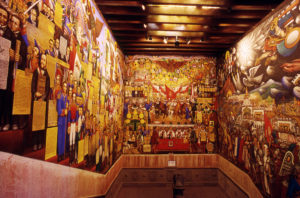 Maestro Desiderio Hernández Xochitiotzin, with his work, has captured the complexity and reality of just a part of Mexico’s long history and the many peoples who contributed to making the Mexico of today. This history includes stories of bravery, brilliance in urban planning agronomy, political and military strategy and commerce. This history has lessons for today.
Maestro Desiderio Hernández Xochitiotzin, with his work, has captured the complexity and reality of just a part of Mexico’s long history and the many peoples who contributed to making the Mexico of today. This history includes stories of bravery, brilliance in urban planning agronomy, political and military strategy and commerce. This history has lessons for today.
Perhaps the Xochitiotzin’s will visit San Jose one day and Don Desiderio will share his treasure chest of knowledge regarding a significant time in the history of Mesoamerica – today’s Mexico.
During the summer of 1996, Mrs. Yolanda Reynolds interviewed Maestro Desiderio Hernández Xochitiotzin about his many years painting the history of Tlaxcala and Mexico on the mural of the Government Palace of the capital city of the state of Tlaxcala. The importance of his legacy will continue growing through the years. This interview was published in La Oferta, May 1, 1996.


